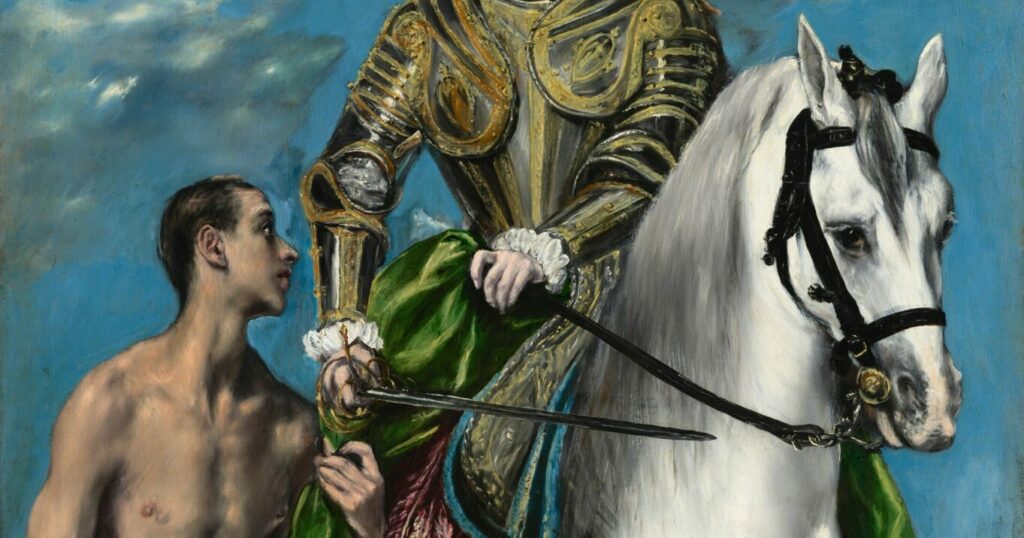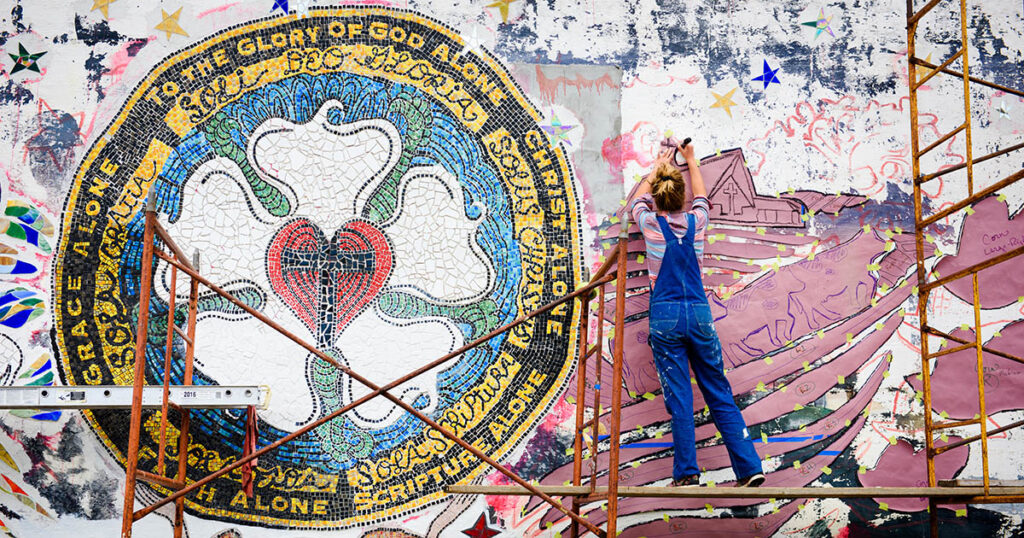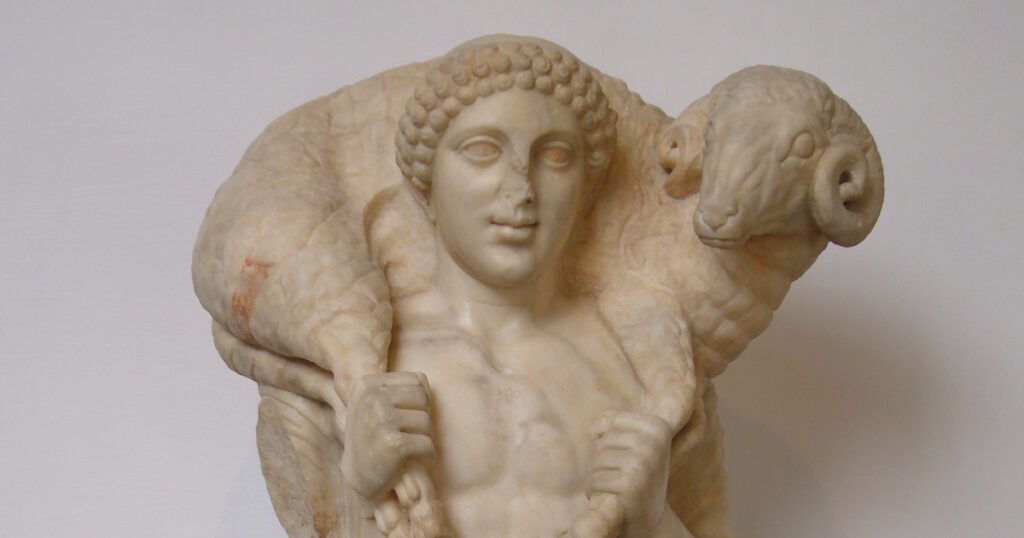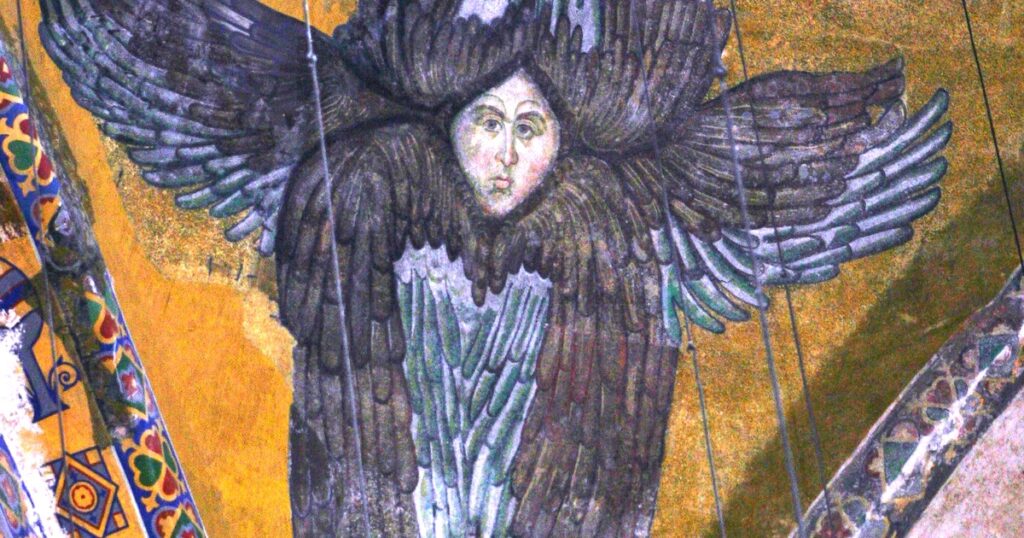An art reflection by Sarah Reinsel on El Greco's "Saint Martin and the Beggar." This is one installment of a new monthly series providing reflections on works of art and music from a Lutheran perspective.
Do you see Christ in this painting?
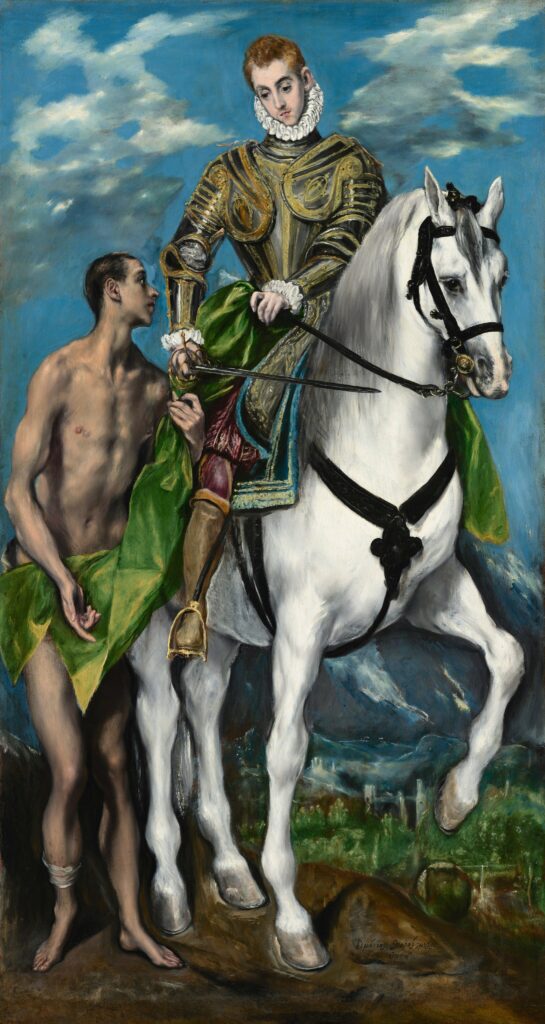
Here, the sixteenth century Spanish painter El Greco depicts the story of St. Martin and the beggar. It is the dead of winter, and bitterly cold. Martin, a soldier in Rome’s imperial army, comes across this poor, naked man at the city gates of Amiens in Gaul.
Knowing full well the risk he is taking — many people had already died of cold and exposure during this especially severe winter — he takes off his cloak, and draping it over his lap, cuts it in half with his sword. Half-a-cloak means survival for the beggar.
St. Martin of Tours (as he came to be known) lived in the fourth century, during the reign of the Roman emperor Constantine. When Martin was a boy, Christianity had only recently been legalized in the empire, and it would be many more years before it would become commonplace. Martin was born to a noble family, all of whom still followed the old pagan religion.
To his parents’ dismay, Martin converted to Christianity sometime between the ages of 10 and 15; to their relief, an imperial decree which conscripted Martin into the imperial cavalry ensured that he would at least have a respectable occupation. Martin’s encounter with the beggar took place sometime early on during his military service.
In this painting, Martin’s emerald green cloak holds the composition together. It is the perfect symbol of charity. Even as Martin prepares to divide the cloak in half with his sword, it already clothes the beggar, showing the unity that charity brings — not even the horse is excluded. With one hand the beggar holds the cloak, and Martin holds its other end, preparing to divide it. They both gaze at the cloak, Martin in concentration, the beggar in gratitude.
As the story goes, a few weeks later, this same beggar appears to Martin in a dream. He is Christ (Matt. 25:35–40).
“Where charity and love prevail, there God is ever found” (LSB 845). “If you see charity, you see the Trinity,” wrote St. Augustine (De trinitate VIII.8.12). What does this mean? The Trinity is not visible to us. What are we really seeing here?
We see Christ, who is all in all.
In the beggar we see Christ, who was once naked and is now clothed, who was hungry and then given something to eat, thirsty and given something to drink (Matt. 25:35–40). In Martin we see Christ, whose decision to give up his cloak and risk his life to save the beggar from dying of exposure points us to Christ’s complete sacrifice of Himself on the cross.
Even Martin’s glorious white horse points us to Christ, calling to mind the passage in Revelation where “the one … called Faithful and True” rides forth from heaven on a white horse (Rev. 19:11).
On horses: A brief art history lesson
Equestrian portraits are a traditional, popular way of depicting a king’s greatness. Spain has an especially illustrious tradition of equestrian portraits for its kings and queens: Titian painted one of King Phillip II, and Rubens painted one of the Duke of Lerma (which bears very close resemblance to this painting of St. Martin).
El Greco’s Spanish successors, Diego Velázquez and Francisco de Goya, are two of the most famous royal portraitists of all time, and between them, they painted dozens of equestrian portraits of Spanish nobility. All of this is to say: by painting an equestrian portrait, El Greco wants us to be thinking about kings.
This painting of St. Martin has all of the traditional features of an equestrian portrait. The Arabian horse nearly steals the show, and Martin is dressed as a true sixteenth century aristocratic Spaniard, wearing elaborate armor and a ruffled collar. His horse is decked out with a costly embroidered saddle and gold stirrups.
But of course, this painting is different from a royal portrait. All pride of place, all strength, vainglory and conceit, is banished by the presence of the naked beggar. Here, El Greco gives us the true image of kingly love, of Christ as Lord.
Christ is no knight or king or warrior in the way the world would expect Him to be. His strength and glory are in His sacrifice; His command as our Lord is to love our neighbor, as Martin does here.
Charity and the chaplaincy
St. Martin’s Day — November 11 — is Martin Luther’s baptismal birthday (and the source of his first name). It is also Veteran’s Day, which makes Martin’s association with military chaplains especially appropriate.
After Martin died, his cloak (or capa) was saved as a relic and often carried forth in war. The priest designated to care for it became known as the capellanus. In addition to his duty to care for the relic, the priest was primarily a pastor to the soldiers he accompanied into battle, preaching to them and praying with them. He would have gone into battle unarmed, at tremendous risk to his own life.
Though Lutherans don’t believe relics contain any blessing or power, we can still see Christ’s presence in these medieval capellani, who followed Martin’s example of self-sacrificial love of neighbor. In any act of Christian charity, we see Christ.
Our word “chaplain” comes from the Latin word capellanus. By his cloak, Martin comes to be associated with military chaplains, a vocation which requires the same self-sacrificial love that Martin once showed to the beggar. Our modern-day military chaplains make that same sacrifice, as we remember on this day.
In all of these ways, we see Christ is in our midst — Christ making us able to love our neighbor because He first loved us (1 John 4:19), gathering us into one and binding us together with sincere hearts.


